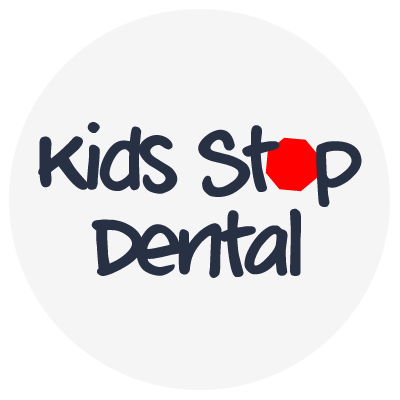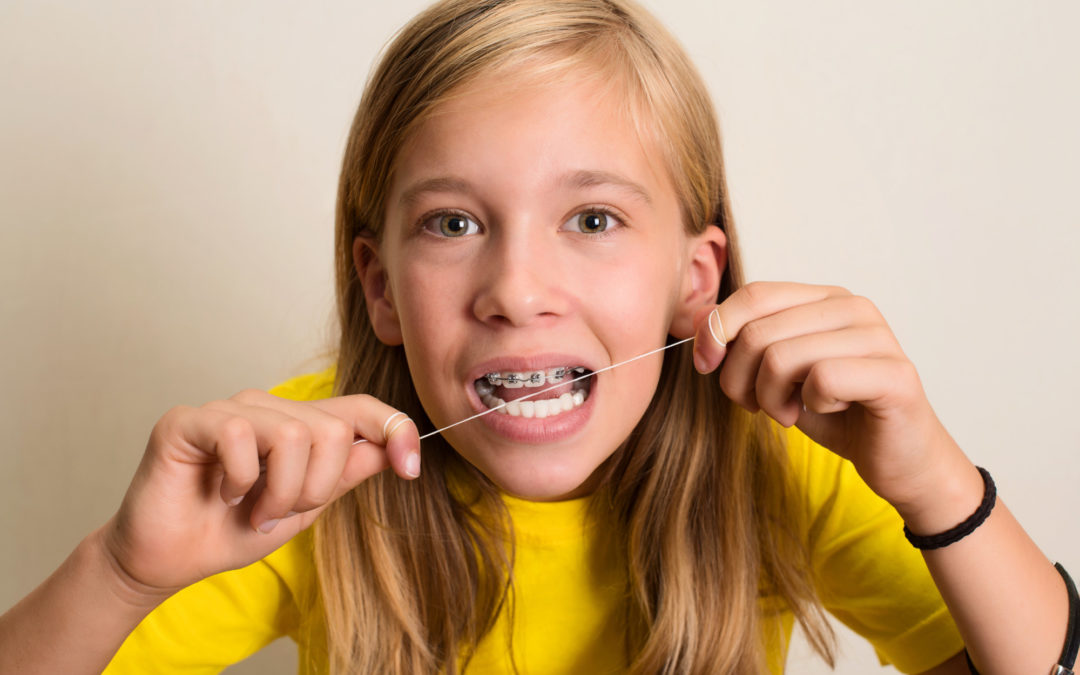Why is flossing important for children? Aren’t their baby teeth going to fall out anyway? While it is true that your child will lose their baby teeth by about age 12, there are important reasons to keep those baby teeth as healthy as possible.
The enamel on baby teeth is thinner than the enamel on permanent teeth. This makes baby teeth more vulnerable to decay and cavities than permanent teeth. Even though your child will eventually lose their baby teeth, decay can lead to other health concerns when not properly treated.
Why is Flossing Important?
Did you know there are over 500 types of bacteria that grow in our mouths? Brushing our teeth removes plaque and bacteria from the sides and tops of our teeth, but toothbrushes can’t reach the area in between teeth. When we eat, food gets caught between the teeth.
That food that stays between the teeth begins to break down, which becomes a breeding ground for bacteria. The bacteria grow above and below the gum line, turning into plaque.
Plaque becomes a sticky film that clings to the teeth. If the plaque isn’t removed, it hardens into a yellow-brown substance called tartar. Tarter is much harder to remove than plaque and contains a surplus of bacteria.
Several things can happen when bacteria-filled tarter grows below the gum line. First, you will most likely notice inflammation of the gums, causing puffy red gums that bleed easily when brushing or flossing. This can be uncomfortable as well as a sign of bacteria overgrowth.
Flossing Prevents Disease
Another thing that can happen when tarter builds up is the bacteria within the tarter can enter your bloodstream and cause other health issues. If left untreated, it can lead to a greater risk of developing an infection in other parts of the body as well as the mouth.
Additionally, tartar buildup below the gums can lead to gingivitis in children. This condition is the cause of a more serious infection in the gums. Gingivitis can even infect the developing permanent tooth below the infected baby tooth.
This can be quite painful for a child, manifesting as swollen, tender gums. Sometimes the gums might pull away from the teeth or puss might develop between the gumline and the teeth. The good news is that periodontal disease is quite preventable. In fact, 80% of plaque can be removed by flossing properly.
Flossing Improves Your Breath
When food is not properly removed between teeth, it begins to putrefy in the mouth. As mentioned before, it then becomes infested with bacteria, causing an unpleasant odor in your child’s mouth.
Of course, mouthwash or breath mints can help mask the smell, but it doesn’t eliminate the cause. The odor will remain until the decaying food and bacteria are removed. The most effective way to remove the food and bacteria stuck between your child’s teeth is by flossing.
Flossed Teeth Remain Whiter
If you notice your child’s teeth begin to yellow, especially on the sides where the teeth meet one another, then they may have tartar build-up. Tartar is the hardened plaque that becomes a brownish yellow color.
Tartar clings to the sides of the teeth and becomes difficult to remove, especially as the layers increase. If not removed, it becomes like multiple layers of yellow cling wrap that hardens with time.
If tartar builds up on your child’s teeth, it requires more work for the dental hygienist to remove it. Sometimes this is a difficult procedure for a child and is much less pleasant than a regular cleaning appointment can be. It is far better to prevent the build-up of tartar through regular flossing.
When Should Children Start Flossing?
Stanford Children’s Health organization recommends children begin to floss as soon as they have two teeth that have made contact with one another, usually occurring around age two or three years.
One thing to note is that children don’t have the dexterity necessary to do an excellent job of flossing until about age eight. With that said, it is important for them to practice flossing and to feel invested in the care of their teeth, so having them try to floss independently first and then follow up with a final round is a good idea.
Our hygienists are more than happy to show you and your child the best way to begin the flossing habit. The earlier they start, the more likely they are to make it a habit for life.
What if My Child Doesn’t Like To Floss?
There are different ways to effectively floss your child’s teeth. The American Dental Association has a video that demonstrates the best way to floss teeth. Watching this video with your child may inspire better flossing habits.
There are many types of floss available so you can find the one that is the most comfortable for your child’s mouth. There are waxed, unwaxed, thin floss, wide floss, flavored, unflavored, textured, and smooth. You can find floss pre-strung in handy little holders or wrap it on your fingers as shown in the video.
There are even water flossers that spray a narrow stream of water that flows between the teeth and around the gum line, which some find more tolerable than traditional string or tape floss. The best floss is the one your child will use.
Prevention Is the Best Medicine
Learning why flossing is important for your child is the key to understanding its necessity. It might take five minutes extra minutes at the end of the day, but the pay off is well worth it. You not only will caring for your children’s health, you will save money by preventing costly dental bills.
At Kids Stop Dental we will keep your whole family smiling! Contact our office today to schedule your consultation.

